
|
|
|
Articles About Aquaculture We continue to add a variety of articles to aid you in learning more about aquaculture. |
|
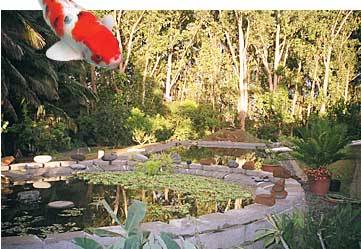
|
|
|
Learn How To Grow Your Own Fish (PDF) 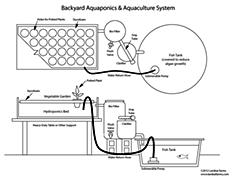 Aquaponics is about aquaculture. Aquaponics is about aquaculture.
A viable ecosystem is based on the principal of
self sustainability. Though man has invented a vast array of
methods and technologies, we still find that by working side by
side in harmony with nature's own methods we can achieve success
in sustainable living. |
||||
|
Aquaponic System 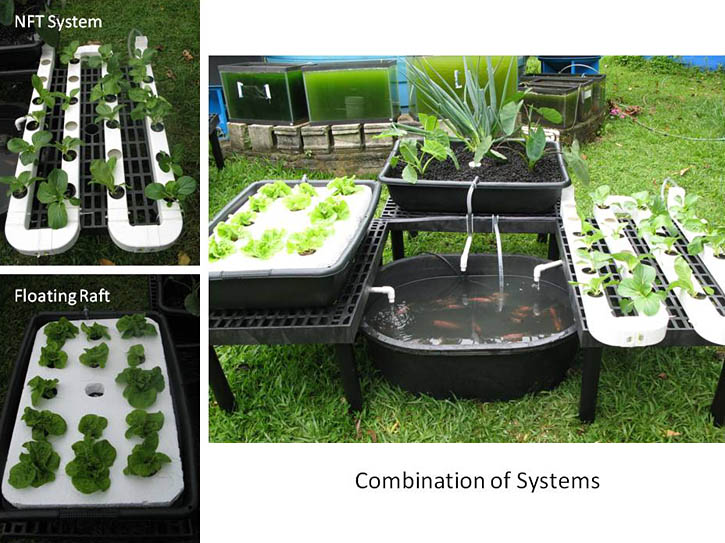 This is a very interesting aquaponic system(s) created by another grower--it uses the same biological system that we use at Lanikai Farms (but we do it on a much larger scale). What is the determining--perhaps limiting--factor for this small garden? It's the fish..."the fish factor". Rule of thumb: If the biological system makes the water healthy so fish can thrive and breed, then the same water can readily grow vegetables. This "fish factor" is the same whether the facility(s) are large like Lanikai Farms (nearly 60,000 gallons), or small like the system in these photos. No dangerous pesticides required. With enough water, no fish food is required...and this points to the miracle of life, i.e. light and water are the basis for algae, protein green mass. Algae growth in water is evolution happening right in front of us! The universe is pregnant with life. |
||||
|
Ecologically Friendly Fish Breeding
In a presentation at a
national aquaculture conference
Lloyd touted Hawaiis aquaculture industry leaders, their
courage and determination to develop and promote Hawaiis
commercial aquaculture. In so doing, the comments stress the
philosophical spirit behind Lanikai Farms. The environmental
landscape mirrors the hearts and minds of people who at this
point in history are in control of virtually all land and its
accompanying water resources. The reality is that corporate
business values are steadily depleting the natural environment
and hardening areas that were once water sources with concrete
and asphalt."
|
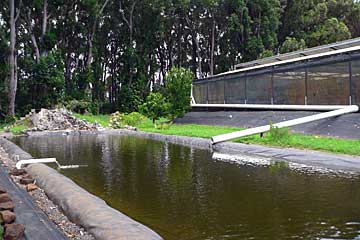 Rainwater on greenhouse roof is gravity fed into pond (right side). Clean water emptying through plumbing on left side is gravity fed from bio-filter.
|
|||
|
|
||||
|
Getting Started in Aquaculture By Marley Beem - From the Oklahoma Cooperative Exstension Service. Aquaculture, the production of aquatic animals and plants under controlled conditions, is the fastest growing form of alternative agriculture in the United States. Photos of ponds packed with eagerly feeding fish are capturing the imagination of people across the country. Before jumping into fish farming, however, it is wise to temper your enthusiasm with an objective look at the benefits and disadvantages involved. It is not unusual for people interested in aquaculture to have some mistaken ideas. |
||||
|
Pump Sizing, "Flow Rate" and "Head" Determining flow rate and total dynamic head can be difficult but need not be overly so. Use these formulas for determining your waterfall and pond throughput. |
||||
|
Pond Hygiene A garden pool is a confined space. Its biological equilibrium can be established on a scientific basis, but it will always be very much influenced by environmental conditions. For this reason, a regular check of a number of parameters is essential for preventing accidental imbalance, and correcting if the need arises. |
||||
|
Water Usage in Recirculating Aquaculture/Aquaponic Systems Clean water is a precious resource to be wisely utilized and conserved. Irrigation claims 70 percent of the water that we use. The excess water leaving industrial farms is often contaminated with silt, pesticides, herbicides and fertilizers, making it unfit for reuse. |
||||
|
What Bottom Oxygenation Does A helpful illustration of Bottom Oxygenation that is crucial to understanding Recirculating Aquaculture Systems. |
||||
|
|
||||
|
|
|
||
|
Lanikai Farms,
LLC 20 North Lanikai Place Haiku, Maui, HI 96708 |
Phone: (808) 572-2269 Fax: (808) 573-1603 Email: info@lanikaifarms.com www.lanikaifarms.com |
||
|
|
|
||
|
|
|
||
| The aquaculture teaching facility was developed under award NA06RG0436 from the National Oceanic and Atmospheric Administration, U.S. Department of Commerce. The statements, findings, conclusions, and recommendations are those of Lanikai Farms and do not necessarily reflect the views of the National Oceanic and Atmospheric Administration or the Department of Commerce. | |||
|
|
|||
|
|
|
|
||
|
© 2025 Lanikai Farms LLC,
All Rights Reserved. Photo credits - Lloyd Fischel |
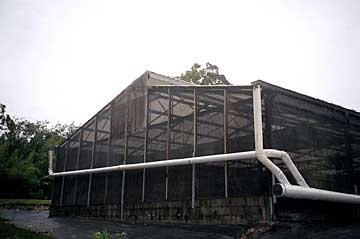
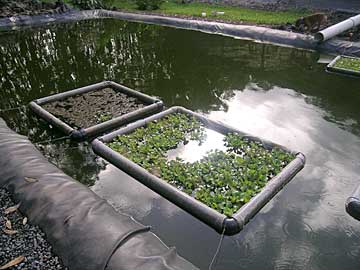 Culture pens keep
different varieties and sizes of fish separate.
Culture pens keep
different varieties and sizes of fish separate.